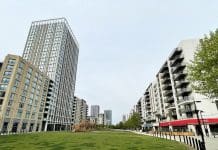Right first time will keep costs down in accessible environments
We see enough examples every day to tell us that where there are steps it may also be helpful to have a ramp and where there are toilets then nearby there should be one that is accessible. But what does all that mean?
The same thought processes that recognise those needs should also flag up that it’s not enough to have just any old ramp. And a loo doesn’t become accessible just because you widen the door and stick a picture of a wheelchair on it.
To borrow a phrase from the politicians, the devil is in the detail, and a lot of people merely scratch the surface.
By getting it wrong when designing to accommodate access for disabled people you may face the costs of fixing any errors, loss of business and customer compensation, and it underlines the importance of getting the design right at the outset.
A new construction project or major renovation can involve an army of experts, each of them specialists in their respective disciplines but not necessarily able to anticipate the accessibility impact of their individual contributions on the wider project.
The general principle of a ten-fold increase in the cost of an error for each stage of the process is particularly applicable to building design.
For every £1 spent remedying a problem at the concept and preparation phase you can expect to spend £10 if the problem is not resolved by the time you get to scoping a project, and £100 at the planning and pre-construction stage.
Add another zero if the problem is still there at the point of application and construction, and be prepared for that initial £1 to climb to £10,000 if you have to make alterations once the property is occupied and in use.
By having an access consultant on the team you can ensure you get things right first time, avoiding the delays and cost that result from having to revise the work of one specialist and then make sure it fits with the plans of all the others.
The savings in time and money are such that typically the investment will pay for itself, and that’s before you consider the possible costs of a discrimination claim and the loss of business when a disabled person and the other members of their party decide to shop, eat or stay elsewhere.
Case studies
Not long ago a client of ours contacted us as they were in charge of a project to install a new ramp to an existing emergency exit which was to become an entrance for a member of staff who uses a wheelchair.
The property owner asked the surveyors if they had arranged for the design to be checked by a member of the National Register of Access Consultants. They were concerned because an architect elsewhere on the site had designed a ramp that didn’t work.
They’d had to arrange for the ramp to be removed, re-designed and rebuilt. This was all at the architect’s expense, but the site owner was keen to avoid a repeat of the situation and the all-round inconvenience.
We reviewed the design and made recommendations for change and we also pointed out areas that had not even been considered. It was clear that, without our input, the same failings would have happened again.
There were no contrasting landings to help visually impaired people identify the top, bottom and intermediate levels of the ramp. Similarly the colour contrasting nosings to the steps were only to be found on the stair tread and not on the riser. The handrails didn’t extend beyond the top and bottom of the accompanying steps, creating potential difficulties for people who need to steady themselves. Finally the clear effective width of the door had not even been considered, and might not have been accessibly by wheelchair anyway.
Even the smallest and most straightforward of facilities aimed at improving accessibility can so easily be built but yet found lacking. Our fee for the work was negligible in the scheme of things, but the cost of the finished project could have been reduced if our involvement had begun earlier, saving other people’s time, effort and trouble.
Accessibility of the loos was the main reason for an improvement programme at a small church. We were called in and gave design guidance about how to set up an accessible WC and how to lay out the room that they proposed to use. It was an existing WC that exceeded the minimum size required, which was very good. They brought in some builders who did all the work and we then went back to look at it.
In terms of accessibility it was a disaster. The builders had not stuck to the plan but had laid out the room for their own convenience. With an accessible WC you should be able to reach the wash basin, soap dispenser and paper towels while seated. You couldn’t do any of those things, and it was also very difficult for someone to make a side transfer from a wheelchair to sit on the pan.
With our further guidance they were able to make the changes and ensure the layout of the room was accessible. But because it had been presented to us as a completed job the modifications that were required were substantial and expensive.
If you want to know more, or you have a question or concern, please contact us at info@aboutaccess.co.uk
Clients can access the NRAC either through its web site www.nrac.org.uk or by contacting the NRAC directly on 020 7822 8282 or by email info@nrac.org.uk
















